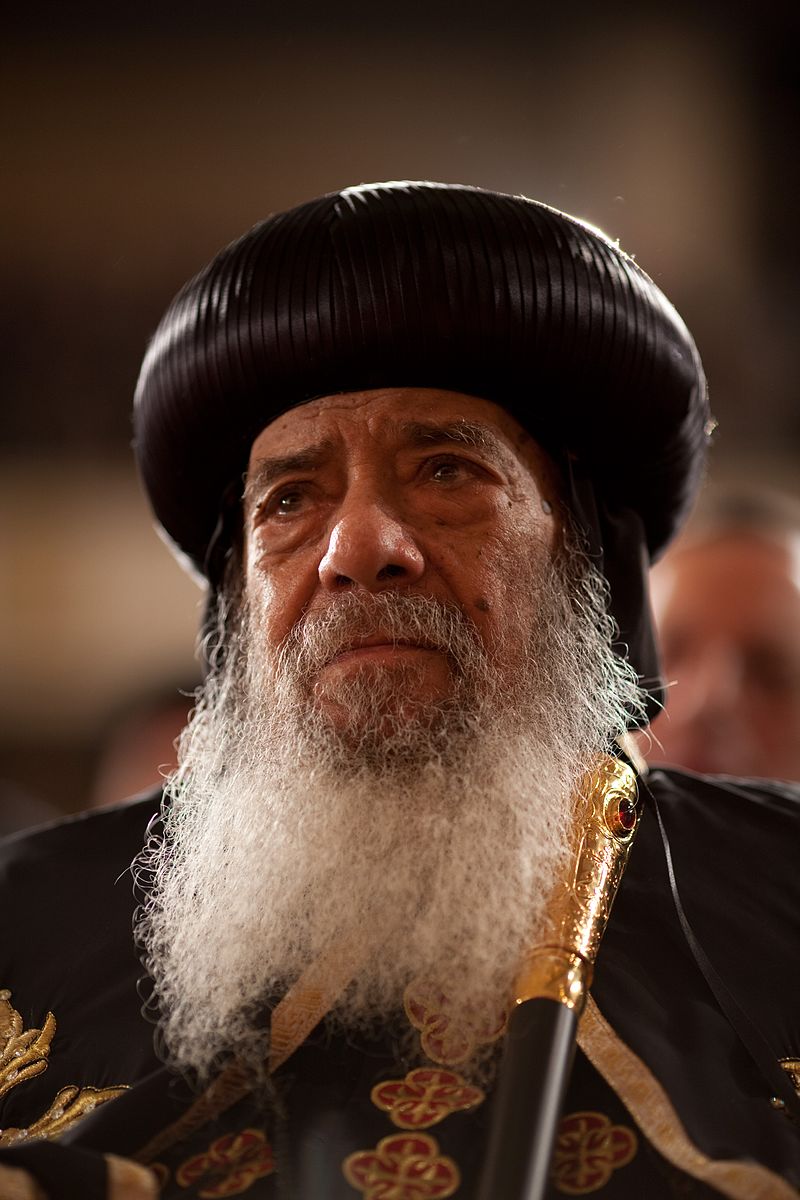His late Holiness Pope Shenouda III of Alexandria and Patriarch of the See of St. Mark came to lunch at Government House, Melbourne, in November or December 1989, accompanied by a large entourage of Coptic clerics. I cannot now recall why the Pope was in Melbourne, but it was evidently a visit of some importance—maybe having to do with the inauguration of a new Coptic diocese in Australia. When their enormous motorcade came up the drive and the party alighted at the front steps most of the Governor’s staff were assembled for presentation, in strict order of seniority. None of us quite knew what to expect, and certainly the sight of so many bearded Orthodox prelates wearing their long black robes, jewel-encrusted pectoral crosses and distinctive bun-shaped headdresses was impressive indeed. The Governor and Mrs. McCaughey stepped forward to greet His Holiness.
Now, Sandy, the Governor’s golden retriever, was mostly a very placid and well-behaved dog, but on this occasion, faced with such an intriguing gathering, she became very excited. Sandy broke ranks, and leaped forward before anyone could restrain her. Perhaps sensing with canine shrewdness the correct identity of the ranking visitor, Sandy made a bee-line for Pope Shenouda, jumped up and greeted him with much friendliness and panting, her front paws planted squarely on His Holiness’s shoulders—he was not a tall man, and Sandy McCaughey was quite a long and silky dog. There was a collective sigh of relief as the Pope greeted Sandy with equal enthusiasm, laughter, patting, and other signs of affectionate good humour. My recollection is that the ensuing lunch was a tremendous success.
I shudder to recall my total ignorance of any and everything to do with Coptic Christianity. At lunch I was seated next to one of His Holiness’s junior assistant private secretaries, a relatively young but, even so, slightly grizzled-looking Coptic cleric. Pluckily, by way of an opening gambit, I asked him with considerable deference by what path of faith and learning he had become a member of Pope Shenouda’s staff in Alexandria—assuming that this must have entailed years of asceticism, prayer, even privation in some lonely desert hermitage; upwards of a decade immured in a fortified monastery, muttering prayers six times a day, and enduring four-hour liturgies—for which the relentless Oriental droning of hirsute clerics provided a suitable backdrop; perhaps also a period of arduous formation involving subsistence farming, goat dung, relentless toil in the mucky irrigation channels of the Nile Delta, etc., etc. But, no: His Holiness’s junior assistant private secretary told me, with perfect candour, that he did a degree in electrical engineering at Cairo University, and then an MBA at Harvard.
Nothing, nothing is ever quite so straightforward as it might seem.














